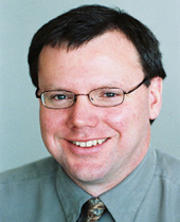IMV researchers make key discovery that may help fight cancer

University of Minnesota researchers in the Institute for Molecular Virology (IMV) have made a key discovery that could have important implications for developing a strategy to stop the spread of a highly infectious virus currently spreading among remote areas of central Australia. Called human T-cell leukemia virus type 1 (HTLV-1), infection rates are reportedly exceeding 40 percent among adults in those communitites. HTLV-1, the first human cancer virus discovered, can cause leukemia and lymphoma.
Louis Mansky, Ph.D., director of the IMV and professor in the School of Dentistry and his team have been investigating how HTLV-1 produces particles that can spread to other cells in the body. In their research published in the Journal of Virology, researchers created mutations in HTLV-1’s main structural protein (called Gag) and investigated how these mutants affected the production of HTLV-1 particles. The spread of HTLV-1 from cell to cell requires virus production, which is critical for establishment of infection in the body.
Through their research, Mansky and his team discovered that a key region in the HTLV-1 Gag protein had critical amino acid residues required to produce virus particles.
“By creating these mutants, we found important new insights regarding how the structure of the Gag protein is critically important in making new virus particles,” said Mansky, the lead author of the study and Masonic Cancer Center member.
HTLV-1 is transmitted through sexual contact, blood transfusion and from mother to child by breastfeeding. Along with being a carcinogen, the virus can lead to other serious health conditions and cause a chronic progressive disease of the spinal cord. In this study, Mansky’s team also found the key virus protein used to produce a HTLV-1 virus particle is assembled in a manner distinct to that of related viruses like HIV.
“HTLV-1 is poorly understood and this is an important step to better understanding how it infects people and spreads,” said Mansky. “Further research is needed to understand the molecular nature of how HTLV-1 virus particles are produced from infected host cells. In doing so, we will be able to better apply this knowledge toward creating strategies to prevent HTLV-1’s spread.”
Funding for this study was provided by the National Institutes of Health.
Mansky was recently interviewed by CNN concerning the fight against HTLV-1.